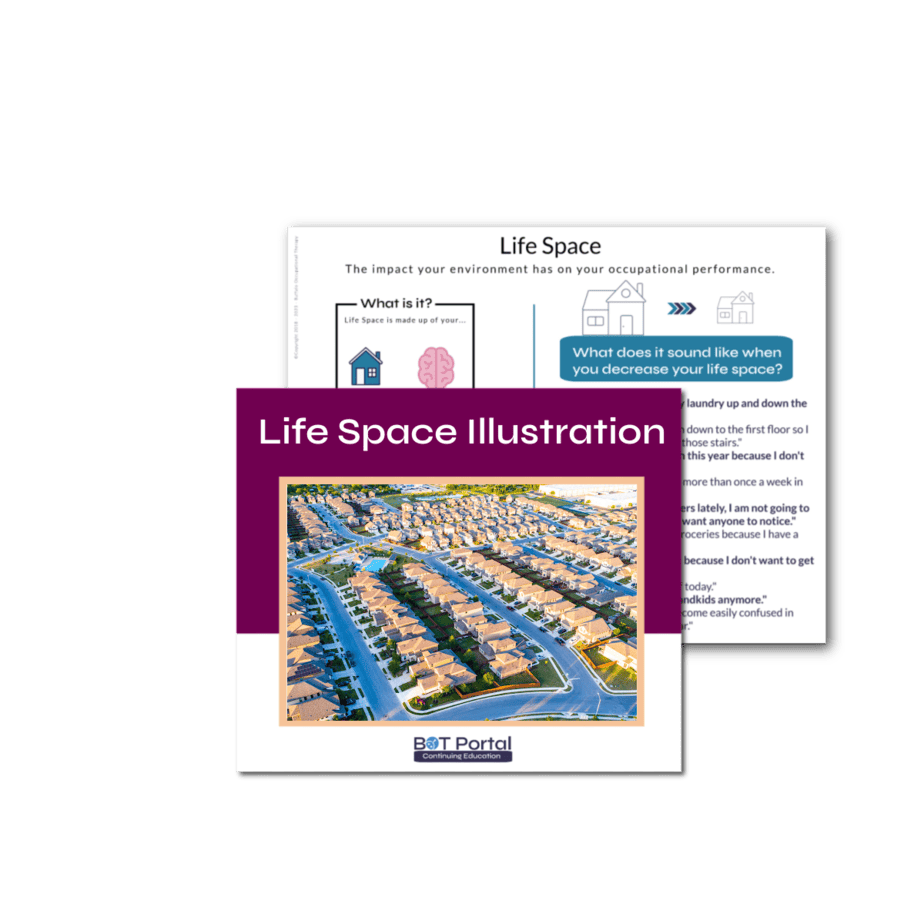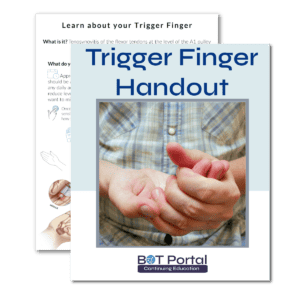Description
Life Space Theory
“Maximizing life space preserves functional mobility and participation.”
Occupational therapy practitioners are constantly navigating the intricate landscape of neurodegenerative conditions like Alzheimer’s, Parkinson’s, and multiple sclerosis. These diseases present multifaceted challenges, impacting both cognitive functioning and physical abilities. To aid in the quest for improved quality of life for their clients, therapists often turn to frameworks like Life Space Theory.
Life Space Theory, conceived by Dr. Reuben M. Baron in the mid-20th century, provides a comprehensive understanding of how individuals interact with their environment as they age or cope with health issues. It emphasizes the dynamic interplay between mobility, environmental context, and activity engagement. By integrating Life Space Theory into rehabilitation strategies, occupational therapists can enhance outcomes for individuals facing neurodegenerative conditions.
Take, for instance, the case of Mr. Johnson, a 65-year-old diagnosed with Parkinson’s disease. As his symptoms progress, Mr. Johnson’s ability to perform everyday activities diminishes. Simple tasks like meal preparation or moving around his home become increasingly challenging. Through the lens of Life Space Theory, therapists can assess Mr. Johnson’s mobility within different environments, from his immediate surroundings to the broader community. They can pinpoint obstacles hindering his participation and develop interventions to promote independence and engagement.
Life Space Theory serves as a guiding framework for therapists and clients alike. By mapping out the various zones within an individual’s life space, therapists can identify areas of limitation and tailor interventions accordingly. For Mr. Johnson, this framework becomes a roadmap for his rehabilitation journey, helping him set goals to expand his life space and maintain autonomy despite his condition.
In the realm of occupational therapy, Life Space Theory offers a practical approach to addressing the intricate relationship between cognition and physical activity in neurodegenerative conditions. By incorporating this theory into practice, therapists empower their clients to lead fulfilling lives despite the challenges they face. It’s not just about managing symptoms; it’s about maximizing independence and promoting meaningful participation in daily life.
Other Helpful Links:
Check out BOT Portal: Resource Site for Occupational Therapy Students and Practitioners




